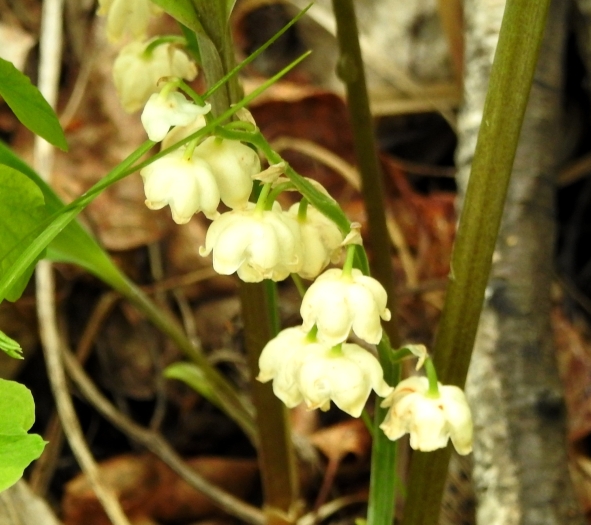Japanese Lily Of The Valley
(Convallaria keiskei)
Japanese Lily Of The Valley (Convallaria keiskei)
/
/

Анна Васильченко
CC BY 4.0
Image By:
Анна Васильченко
Recorded By:
Copyright:
CC BY 4.0
Copyright Notice:
Photo by: Анна Васильченко | License Type: CC BY 4.0 | License URL: http://creativecommons.org/licenses/by/4.0/ | Rights Holder: Анна Васильченко | Publisher: iNaturalist | Date Created: 2023-06-25T13:22:08-07:00 |
























Estimated Native Range
Summary
Convallaria keiskei, commonly known as Japanese Lily of the Valley, is a perennial herb that is native to Japan, but it is more accurately found in a range of habitats including mountainous woodlands, forest margins, and shaded riverbanks. It typically grows at a moderate rate to a height of 0.3-0.5 feet (0.09-0.15 meters) and spreads about 0.3-0.5 feet (0.09-0.15 meters). This plant forms dense colonies of upright stems, each bearing a pair of broad, elliptical leaves from which arching stems of fragrant, bell-shaped, white flowers emerge in late spring. The blooms are quite showy and often used in floral arrangements.
The Japanese Lily of the Valley is valued for its sweetly scented flowers and its ability to thrive in shaded conditions, making it an excellent ground cover for woodland gardens, shaded borders, and naturalized areas. It is also appreciated for its low maintenance requirements once established. In cultivation, it prefers moist, well-drained soils rich in organic matter and thrives in part shade to full shade. While generally not demanding, it does require consistent moisture and should not be allowed to dry out. Over time, it can form extensive carpets, which should be managed to prevent it from becoming invasive in some regions. It is relatively free from major pests and diseases, although snails and slugs may occasionally feed on the foliage.CC BY-SA 4.0
The Japanese Lily of the Valley is valued for its sweetly scented flowers and its ability to thrive in shaded conditions, making it an excellent ground cover for woodland gardens, shaded borders, and naturalized areas. It is also appreciated for its low maintenance requirements once established. In cultivation, it prefers moist, well-drained soils rich in organic matter and thrives in part shade to full shade. While generally not demanding, it does require consistent moisture and should not be allowed to dry out. Over time, it can form extensive carpets, which should be managed to prevent it from becoming invasive in some regions. It is relatively free from major pests and diseases, although snails and slugs may occasionally feed on the foliage.CC BY-SA 4.0
Plant Description
- Plant Type: Herb
- Height: 0.3-0.5 feet
- Width: 0.3-0.5 feet
- Growth Rate: Moderate
- Flower Color: White
- Flowering Season: Spring
- Leaf Retention: Deciduous
Growth Requirements
- Sun: Part Shade, Full Shade
- Water: Medium
- Drainage: Medium
Common Uses
Border Plant, Fragrant, Low Maintenance, Potted Plant
Natural Habitat
Mountainous woodlands, forest margins, and shaded riverbanks
Other Names
Common Names:
Scientific Names: , Convallaria keiskei, Convallaria japonica, Convallaria keiskei f. colorata, Convallaria keiskei f. desulavii, Convallaria keiskei var. trifolia, Convallaria majalis subsp. manschurica, Convallaria majalis var. keiskei, Convallaria majalis var. manshurica, Convallaria manschurica,
GBIF Accepted Name: